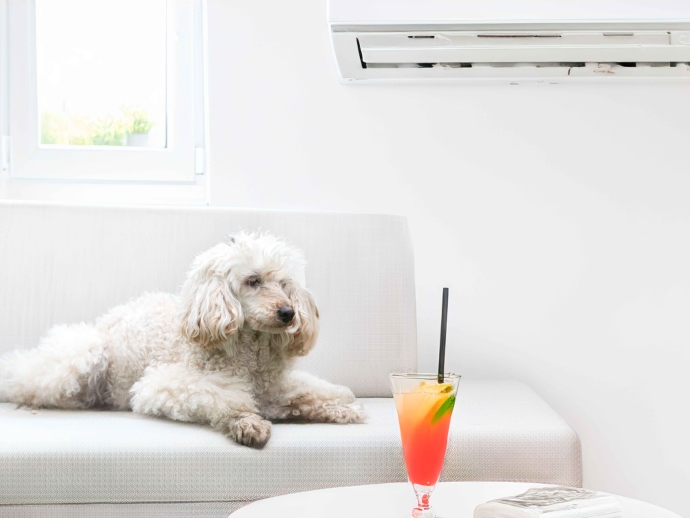HVAC Sizing Guide: Why Bigger Isn't Always Better for Your Home

When it comes to heating, ventilation, and air conditioning (HVAC) systems, one of the most common misconceptions is that bigger is always better. Many homeowners assume that a larger system will provide more comfort and efficiency. However, this is far from the truth. Proper HVAC sizing is crucial for optimal performance, energy efficiency, and indoor comfort. This guide will explore why selecting the right size HVAC unit is essential and how to achieve it.
Understanding HVAC Sizing
HVAC sizing refers to the process of determining the appropriate capacity of heating and cooling systems needed for a specific space. This capacity is typically measured in British Thermal Units (BTUs) or tons, with one ton equaling 12,000 BTUs. The goal of proper sizing is to ensure that the system can effectively heat or cool a home without wasting energy or causing discomfort.
The Risks of Oversizing
-
Short Cycling: One of the primary issues with oversized HVAC units is short cycling. This occurs when the system turns on and off too frequently, failing to run long enough to adequately dehumidify the air. As a result, homeowners may experience discomfort due to fluctuating temperatures and humidity levels.
-
Increased Energy Costs: An oversized unit consumes more energy than necessary, leading to higher utility bills. The frequent cycling can also put additional strain on the system, resulting in increased wear and tear and potentially shortening its lifespan.
-
Poor Indoor Air Quality: Short cycling not only affects temperature control but also impacts indoor air quality. A system that runs intermittently may not effectively filter out pollutants and allergens, leading to stale air and potential health issues.
The Benefits of Proper Sizing
-
Enhanced Comfort: A correctly sized HVAC system maintains consistent temperatures throughout the home, ensuring comfort in every room. It allows for better air distribution and reduces hot or cold spots.
-
Energy Efficiency: Properly sized systems operate more efficiently, reducing energy consumption and lowering utility bills. Homeowners can enjoy significant savings over time by avoiding the costs associated with oversized units.
-
Extended Lifespan: By minimizing wear and tear through reduced cycling, appropriately sized HVAC systems tend to have longer lifespans. This translates to fewer repairs and replacements over time.
How to Determine the Right Size HVAC Unit
To determine the right size HVAC unit for your home, several factors must be considered:
-
Calculate Square Footage: Start by measuring your home's square footage. This involves measuring each room's length and width and multiplying these dimensions to find the area. Be sure to include hallways and other spaces in your calculations.
-
Assess Insulation Quality: The quality of insulation in your home significantly affects heating and cooling needs. Homes with poor insulation may require larger units to compensate for heat loss or gain.
-
Consider Climate Zones: Different regions have varying climate conditions that influence HVAC requirements. For example, homes in hotter climates may need more cooling capacity than those in milder areas.
-
Evaluate Windows and Doors: The number and quality of windows and doors can impact energy efficiency. Drafty windows may lead to increased heat loss or gain, necessitating a larger HVAC system.
-
Use Manual J Calculation: The Manual J calculation is an industry-standard method used by HVAC professionals to determine heating and cooling loads accurately. This calculation considers all factors mentioned above to provide a precise recommendation for unit size.
Sizing Charts and Tools
Many online resources provide sizing charts that correlate square footage with recommended unit sizes based on climate zones. For example:
|
Home Size (sq ft) |
Unit Size (Tons) |
BTUs |
|
1,000 |
2 |
24,000 |
|
1,500 |
3 |
36,000 |
|
2,000 |
4 |
48,000 |
|
2,500 |
5 |
60,000 |
These charts can serve as a helpful starting point for homeowners but should not replace professional calculations.
Best Practices for Installation
To ensure optimal performance from your HVAC system:
-
Consult a Professional: Always work with a qualified HVAC technician who can perform a Manual J calculation tailored to your home’s specific needs.
-
Choose Quality Equipment: Invest in high-quality equipment from reputable manufacturers known for efficiency and reliability.
-
Regular Maintenance: Schedule regular maintenance checks to keep your system running efficiently. This includes changing filters, cleaning ducts, and checking refrigerant levels.
Conclusion: Balancing Benefits and Risks
Selecting the right size HVAC unit is crucial for maintaining comfort in your home while maximizing energy efficiency. Oversized systems lead to short cycling, increased energy costs, and poor indoor air quality. Conversely, properly sized units enhance comfort, improve energy efficiency, and extend the lifespan of the equipment.
Homeowners should take the time to calculate their heating and cooling needs accurately using methods like Manual J calculations while considering factors like square footage, insulation quality, climate zone, and window efficiency. Consulting with an HVAC professional ensures that you make informed decisions tailored to your specific circumstances.
By understanding the importance of proper sizing in HVAC systems, homeowners can avoid common pitfalls associated with oversizing while enjoying a comfortable living environment that is both efficient and cost-effective.

